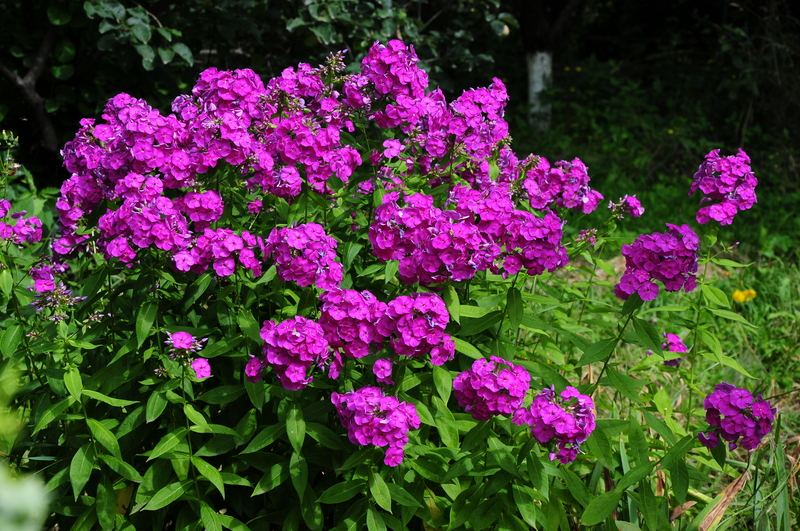Top Tips for Orchid Care Success and Longevity
Posted on 24/08/2025
Top Tips for Orchid Care Success and Longevity
If you're captivated by the elegance of orchids and want to enjoy their dazzling blooms for years, understanding how to care for them properly is crucial. Orchids are often seen as exotic and finicky, but successful orchid care is achievable with the right knowledge and dedication. In this comprehensive guide, we will explore expert techniques, actionable tips, and essential steps you can follow for long-lived, thriving orchids.
Understanding Your Orchid: Types and Their Needs
Before diving into care routines, it's important to recognize that not all orchids are created equal. Different species have varying requirements, and meeting their specific needs is the foundation of orchid longevity and plant health.
Popular Orchid Varieties
- Phalaenopsis (Moth Orchids) - Known for their easy-going nature and long-lasting flowers, they are ideal for beginners.
- Cattleya - Famous for their vibrant and fragrant blooms, these orchids require bright light.
- Dendrobium - A diverse genus that generally needs more water during growth and less during dormancy.
- Oncidium - Also called "dancing lady orchids," they enjoy intermediate care and lots of airflow.
- Vanda - Prefers high humidity and abundant light; great for experienced growers.
Tip: Identify your orchid type for best results. Each species has unique light, water, and temperature preferences.

Optimal Light: The Key to Healthy Orchids
Orchids thrive when given the right amount and type of light. Proper lighting influences not just their growth but also flower production and overall longevity.
Natural vs. Artificial Light
- Natural Indirect Light: Most orchids, especially Phalaenopsis, do best in filtered sunlight. A north or east-facing window is ideal.
- Artificial Lighting: If natural light is limited, use LED grow lights positioned a safe distance from your plants.
Warning: Direct sunlight can scorch orchid leaves, while too little light will prevent them from blooming.
How to Tell Your Orchid Gets Enough Light
- Leaves are bright green: This indicates optimal lighting.
- Dark green leaves: Suggest not enough light.
- Pale yellow or reddish leaves: Point to excessive light exposure.
Watering Orchids Properly: Timing and Techniques
Overwatering is a common mistake when caring for orchids, often leading to root rot and plant decline. On the other hand, underwatering can stunt their growth and reduce lifespan.
General Watering Guidelines
- Water orchids once a week during active growth, less during dormancy.
- Use lukewarm, distilled, or rainwater. Avoid softened or chlorinated tap water.
- Let the potting mix dry out slightly between waterings.
- Water in the morning to allow excess moisture to evaporate before nightfall.
- Never allow your orchid to stand in water - good drainage is essential!
Bonus Tip: Stick your finger an inch into the potting mix to check for moisture before watering.
Choosing the Right Orchid Pot and Medium
A well-chosen pot and potting medium directly contributes to your orchid's health and longevity. Orchids typically do not grow in regular soil and require special substrates.
Orchid Potting Medium Options
- Bark Mix: Allows for excellent drainage and aeration. Suitable for most orchids.
- Sphagnum Moss: Retains moisture well; ideal for younger plants and certain species.
- Perlite, Coconut Husk, Charcoal: Often mixed with bark to enhance drainage and discourage microbial growth.
Pot Selection
- Choose pots with ample drainage holes.
- Clear plastic pots are useful for monitoring root health and moisture levels.
- Repot your orchid every 1-2 years, or when the medium breaks down.
Important: Avoid overpotting! Orchids prefer a snug fit.
Humidity and Air Circulation: Mimicking the Natural Habitat
Orchids originate from tropical areas with high humidity and gentle air flow. Replicating these conditions at home leads to vigorous, healthy plants.
How to Increase Humidity for Orchids
- Use a humidity tray filled with water and pebbles under your orchid pots.
- Employ a room humidifier, especially in winter or indoor heating seasons.
- Group orchids together to create a microclimate with higher ambient humidity.
- Mist foliage occasionally, but avoid letting water sit in the leaf axils to prevent rot.
Ensuring Adequate Air Circulation
- Keep orchids in well-ventilated spaces.
- Use small fans to maintain air movement in your growing area.
- Turn fans off at night or when room temperature drops to avoid chilling plants.
Fertilizing for Orchid Growth and Blooming
Feeding orchids the right way can dramatically improve their longevity and blooming potential. Orchids need less fertilizer than many houseplants, but regular, gentle nutrition keeps them strong.
Best Fertilizing Practices
- Use a balanced orchid fertilizer (such as 20-20-20), or one formulated specifically for orchids.
- Apply fertilizer at half the recommended strength every 2-4 weeks during active growth.
- Flush pots with clear water monthly to remove salt buildup, which can damage roots.
- Reduce or stop fertilizing during the plant's dormant phase (usually in winter).
Note: It is better to under-fertilize than to over-fertilize your orchid!
Pruning, Cleaning, and Routine Orchid Maintenance
Keeping your orchid clean and well-maintained extends its life and vigor. Regular removal of dead material and periodic maintenance go a long way in preventing pests and diseases.
Essential Orchid Maintenance Tasks
- Prune spent flower spikes back to the base, unless you expect reblooming (as with Phalaenopsis).
- Remove dead or yellowing leaves with sterilized scissors to avoid spreading infection.
- Wipe leaves with a damp cloth to remove dust and discourage pests.
- Inspect roots during repotting and trim away mushy, brown, or rotten sections.
Preventing and Managing Common Orchid Problems
- Pests: Check regularly for scale, mealybugs, or spider mites. Use insecticidal soap or neem oil as needed.
- Diseases: Ensure proper air circulation and avoid wet leaves to prevent fungal and bacterial infections.
Encouraging Reblooming and Ensuring Orchid Longevity
Orchids are famous for their stunning, long-lasting flowers. After a bloom cycle, many owners wonder how to trigger reblooming and ensure a healthy plant for future seasons.
Stimulating Orchid Reblooming
- Move your orchid to a slightly cooler spot (by 5-10?F at night) for a few weeks to encourage flower spike development.
- Maintain proper light and regular feeding, as adequate energy reserves are needed for flowering.
- Be patient - some species require a dormant rest period before setting new blooms.
Remember: Some orchids rebloom once a year, while others--like Phalaenopsis--can bloom multiple times under ideal care conditions.
Top Mistakes to Avoid for Long-lived Orchids
- Overwatering or using non-draining pots--the biggest cause of root problems.
- Insufficient light--leads to poor growth and no flowers.
- Neglecting humidity--orchids prefer 50-70% humidity for optimal health.
- Ignoring pests or diseases--early detection saves plants!
- Using the wrong potting medium--orchids are not grown in typical soil.

Frequently Asked Questions about Orchid Plant Care
How do I know if my orchid needs water?
Insert your finger about an inch into the potting mix; if it feels dry, it's time to water. Avoid watering on a strict schedule--orchids prefer to dry out a bit between waterings.
Why are my orchid leaves turning yellow?
Yellowing can indicate overwatering, exposure to direct sun, or natural leaf aging. Always check the roots and overall health to diagnose accurately.
Can orchids grow in regular potting soil?
No. Regular soil retains too much moisture and suffocates orchid roots. Always use a specialized orchid potting mix for best plant health and longevity.
Do orchids need special fertilizer?
Yes, orchids thrive with a balanced fertilizer specifically formulated for them. Avoid fertilizers with high urea content, which orchids cannot easily utilize.
Is it normal for my orchid's flowers to drop?
Yes, after the blooming season, flowers will naturally fade and fall off. With proper care, your orchid can rebloom in its next flowering cycle.
Conclusion: Enjoy Years of Orchid Beauty with Proper Care
With these top tips for orchid care success and longevity, you can keep your plants thriving and beautiful for many years. Remember to always consider your specific orchid type, pay attention to its unique needs, and adjust your care routine as necessary. With a little practice and patience, your home will be graced by magnificent blooms, year after year. Happy growing!



